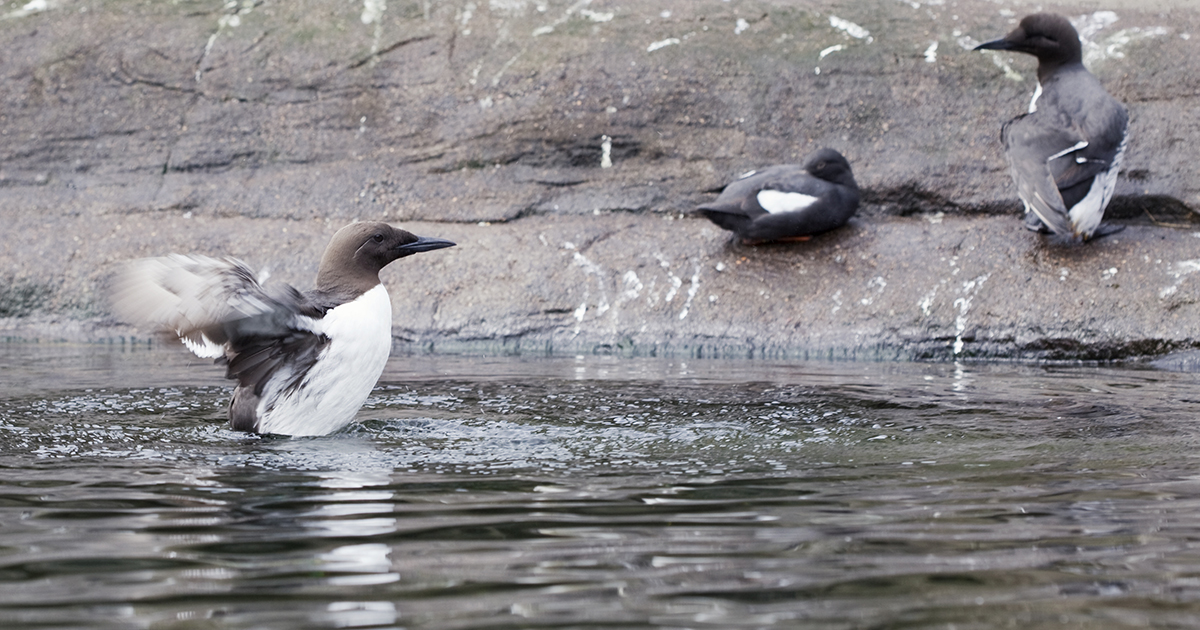Seabirds Inspire a Hybrid, Fixed-Wing UAV-UUV System

Engineering students from North Carolina State University (NC State) have published a paper that looks to the natural world for a fixed-wing, cross-domain vehicle design that can fly above or below water.
With support from Teledyne Scientific, the team aimed to design a hybrid unmanned aerial and underwater vehicle (UAV-UUV) able to complete missions comparable to the hunting expeditions of a common murre, a seabird that flies from nesting locations to feeding areas, dives underwater to catch prey and returns.
The hybrid concept is not new. Rutgers University’s Naviator and London College’s AquaMAV have both proven their ability to transition between water and air—and move in both environments.
 EagleRay takes off from a fully submerged condition. Photo courtesy of NC State and Teledyne Scientific.
EagleRay takes off from a fully submerged condition. Photo courtesy of NC State and Teledyne Scientific.
However, according to NC State mechanical and aerospace engineer, William Stewart, “Current fully-functional designs consist of either multirotor vehicles or micro air vehicles. Fixed wing vehicle designs exist with only partial capabilities, or suffer from scaling issues. The EagleRay vehicle . . . fills the design niche of a fully-functional fixed wing vehicle capable of multiple transitions between air and water.”
To fill this niche, NC State team considered three design concepts: “a quadrotor/fixed-wing hybrid, a vertical takeoff and landing (VTOL) tailsitter aircraft, and a waterjet-assisted takeoff vehicle.”
They compared the capability of each design to complete the murre-inspired missions and selected the VTOL tailsitter design for further study. After an in-depth design and build stage, they created the EagleRay vehicle.
The results were published in the journal Bioinspiration & Biomimetics in August 2018. The paper says, “The completed vehicle prototype successfully conducted submerged operation as well as four air flights. Flights consisted of egress from water, flight in air, ingress into water in each flight, and water locomotion. A total of 11 min, 23 s of flight time was recorded as well as underwater swims down to 12 ft (3.7 m) below the surface.”
According to NC State team’s paper, “While the challenges of cross-domain vehicles are many, the focus of this paper was on buoyancy management and propulsion. Potential solutions to each challenge, inspired by multiple animals that cross between aerial and underwater domains, are investigated.”
So how did they solve the buoyancy challenges? Stewart says his team realized that the “large wing volumes used by unmanned air vehicles to fly efficiently drive vehicle buoyancy up, preventing them from submerging. Heavy active buoyancy control systems can overcome this, but cost weight, energy, and time to transition between underwater operation and flight. EagleRay uses an alternative design, consisting of a passively flooding and draining wing.”
In order to successfully demonstrate viability, says Stewart, the fixed-wing had to “drain enough water to enable it to takeoff from a fully submerged condition.”
Furthermore, the vehicle had to be “controllable during egress and all other mission regimes.”
And finally, “the design features that enable draining must not degrade aerodynamic performance to the point that maintaining level flight is not possible.”
After tackling these challenges, the team tested the design using both mathematical and 3D printed models. These tests showed that “there was no measurable change in lift or drag associated with the features of the wing that enable it to drain passively.”
To read the original paper, click here.

